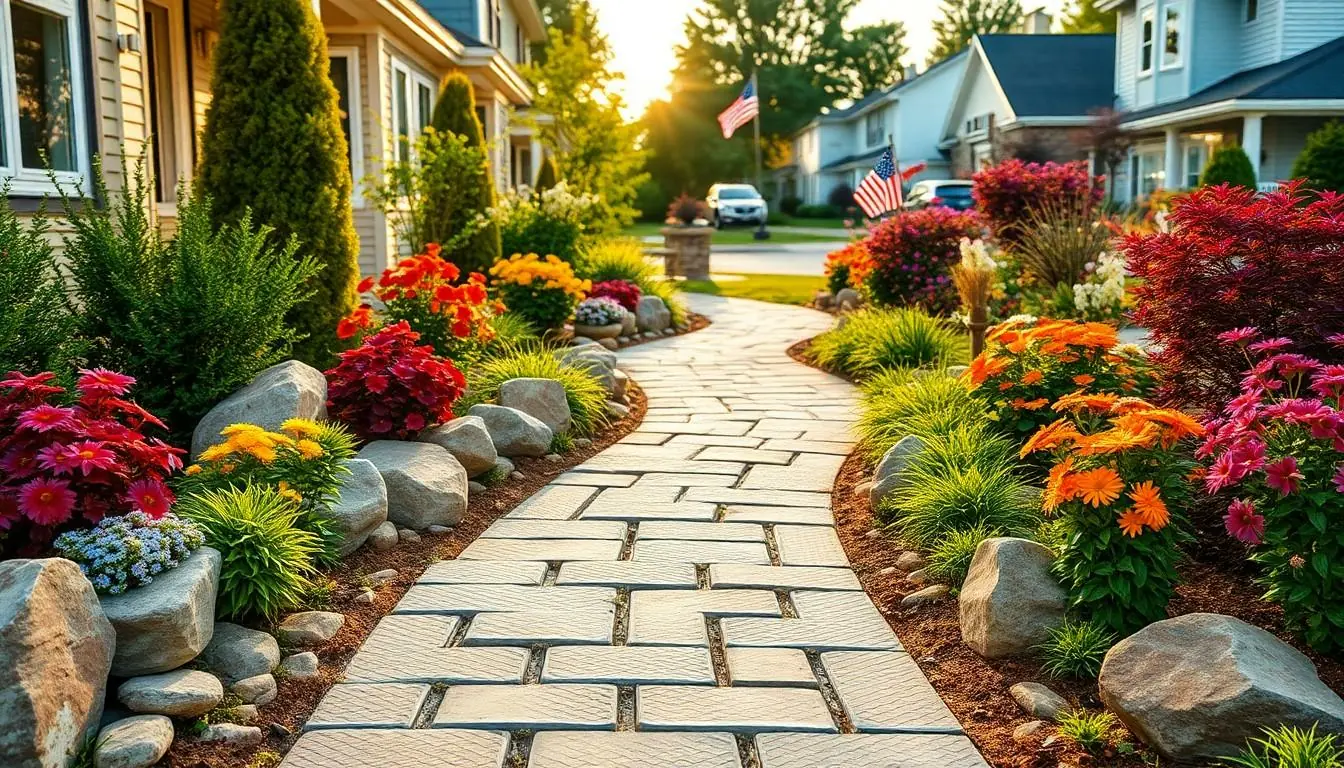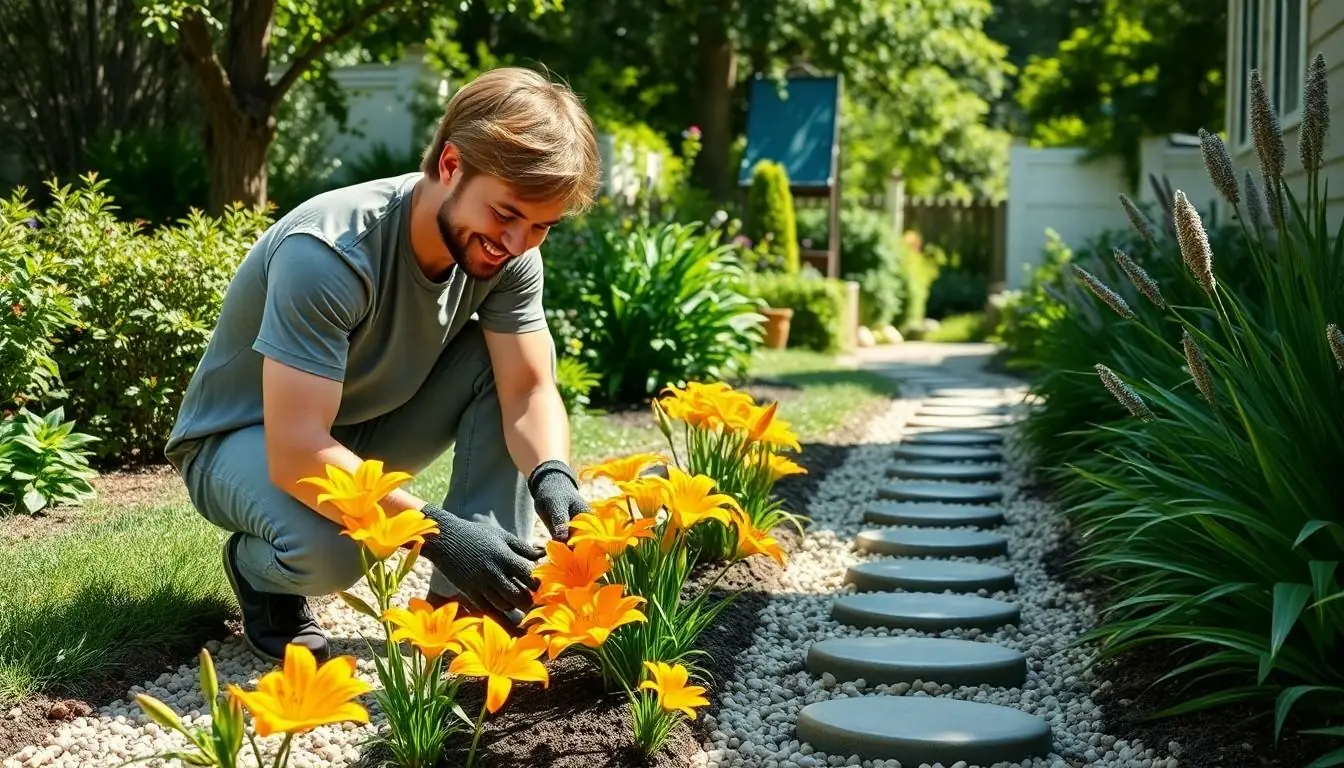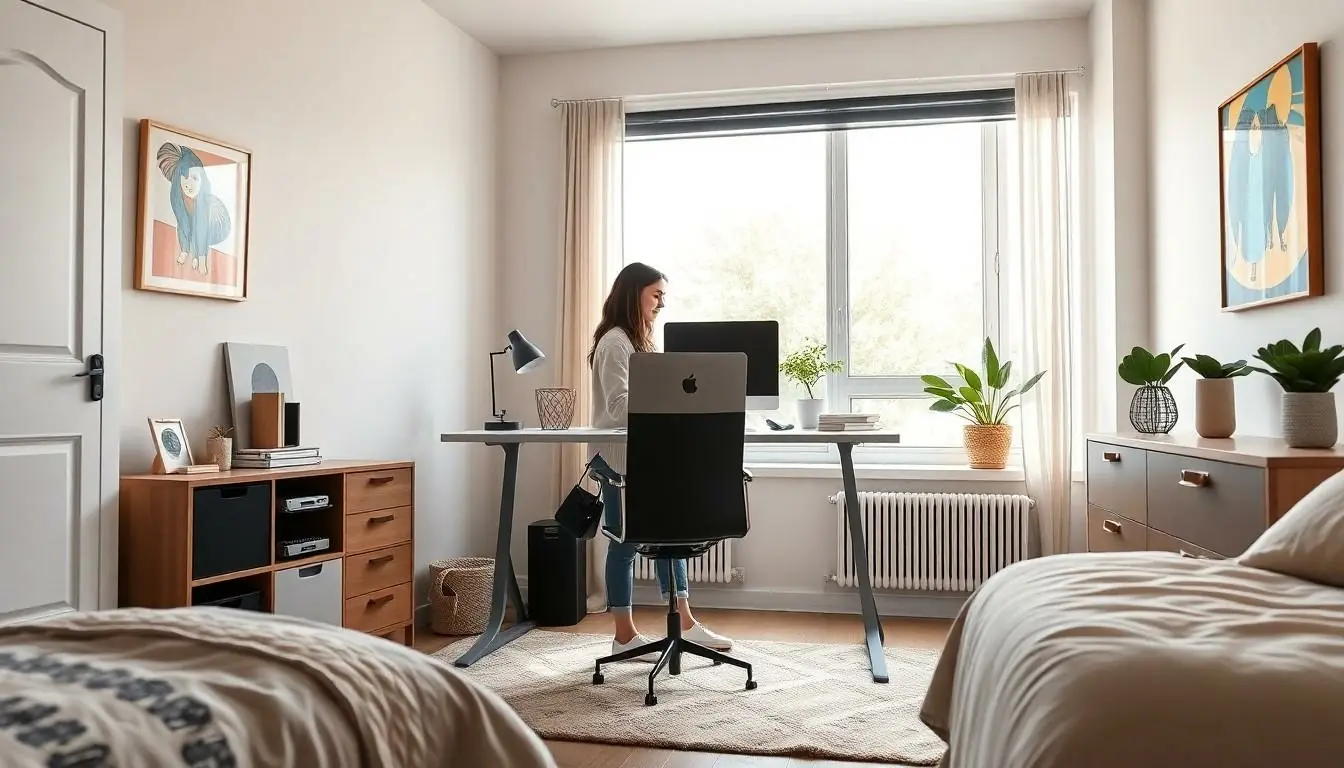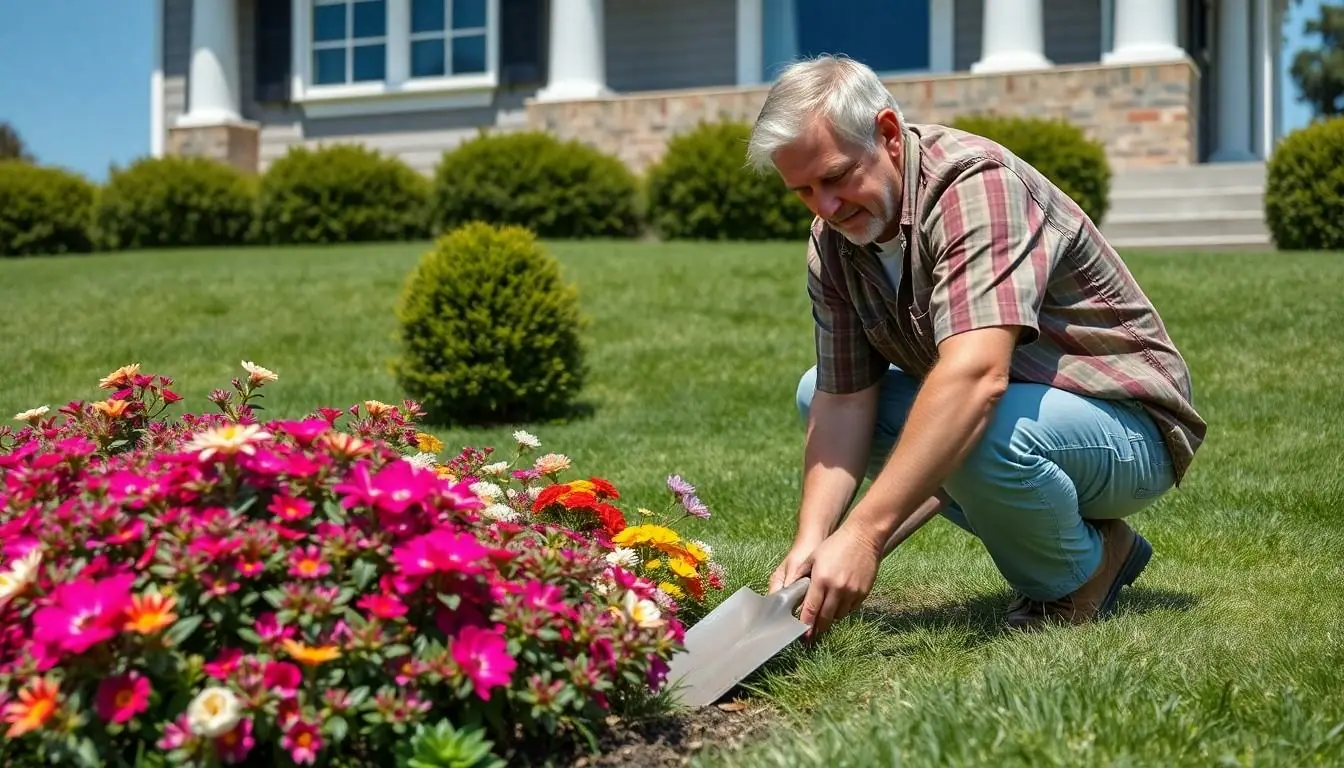Transforming the side of a house into a stunning landscape doesn’t have to feel like a chore. With a sprinkle of creativity and a dash of humor, anyone can turn that neglected strip of dirt into a vibrant oasis. Imagine a space that not only enhances curb appeal but also makes your neighbors green with envy.
Table of Contents
ToggleOverview of Simple Side of House Landscaping
Transforming the side of a house provides homeowners with a unique opportunity to enhance aesthetics and functionality. Landscaping along the side area can be straightforward, often requiring minimal effort and expense. Choosing low-maintenance plants, such as hostas or daylilies, improves visual appeal while reducing upkeep.
Consider incorporating pathways for both practicality and style. Pavers or gravel create clear paths, guiding visitors while eliminating muddy spots. Additionally, placing decorative elements like lanterns or garden art adds charm and personality to the space.
Focusing on strategic planting ensures maximum impact. Grouping plants by height helps create visual layers, with taller plants at the back and shorter ones at the front. This arrangement draws the eye and creates depth.
Using mulch or decorative stones around plants provides a polished finish. Keeping weeds at bay enhances the landscape’s overall appearance. In addition, some homeowners choose to install trellises or fencing, creating vertical interest and additional plant support.
Light is a crucial factor in landscaping. Assessing sunlight exposure will aid in selecting appropriate plants for the side area. Shade-tolerant varieties thrive in low light, while sun-loving plants create vibrant displays in well-lit sections.
Ultimately, simple side of house landscaping creates inviting transitions to entryways or backyards. It’s feasible for anyone to achieve a stunning side garden through manageable choices. This process turns an overlooked space into a welcoming and practical part of the home. The result brings not only improved curb appeal but also enhances the overall enjoyment of outdoor spaces.
Benefits of Simple Landscaping

Simple landscaping techniques provide numerous advantages for any homeowner. Enhancing a side yard can transform a neglected space into an aesthetically pleasing area that captures attention.
Enhancing Curb Appeal
Enhanced curb appeal significantly improves the first impression of a home. Attractive landscaping adds visual interest, drawing the eyes toward the property. Simple elements like colorful plants or decorative stones create an inviting atmosphere. A well-maintained side garden showcases attention to detail and care. Homeowners can select plants that thrive in their specific environment, ensuring vibrant colors throughout the seasons. Pathways constructed with textured pavers or gravel guide guests while adding charm. Garden art and elegant lighting accentuate specific features, making the side of the house a focal point rather than an afterthought.
Improving Property Value
Improved property value becomes evident through thoughtful landscaping. A beautifully landscaped side garden boosts market appeal, making homes more desirable to potential buyers. Statistics indicate that well-designed landscaping can elevate a property’s value by up to 15%. Buyers often consider exterior aesthetics as they assess overall investment potential. Homeowners investing in simple landscaping reap long-term financial benefits while enjoying immediate enhancements. Low-maintenance plants and efficient design reduce upkeep costs, which appeals to budget-conscious individuals. Simple landscaping not only adds beauty but also an undeniable increase in monetary worth to the property.
Key Elements of Simple Side Landscaping
Enhancing the side of a house involves careful selection of key elements like plants, hardscaping, and borders. Attention to these aspects creates a cohesive and inviting atmosphere.
Choosing the Right Plants
Selecting plants for side landscaping requires consideration of light exposure and maintenance needs. For shaded areas, hostas and ferns thrive while adding lush greenery. Sun-drenched spots benefit from daylilies or coneflowers, known for vibrant colors and resilience. Grouping plants by height establishes layers that draw the eye, creating dynamic visuals. Low-maintenance varieties minimize upkeep, allowing homeowners to enjoy their garden without excessive effort.
Hardscaping Features
Incorporating hardscaping features enhances functionality and aesthetics simultaneously. Pathways made of pavers offer both style and structure, guiding foot traffic while preventing muddy ground. Gravel can substitute for pavers, providing an informal yet attractive alternative. Adding seating areas lends practicality, inviting relaxation and enhancing outdoor enjoyment. Consider using trellises or arbors to introduce vertical interest and complement plant life.
Incorporating Edging and Borders
Edging and borders define spaces and enhance the overall look of side landscapes. Materials like brick, stone, or wood create clean lines that separate flower beds from pathways. Decorative borders can add texture and color, bringing a polished finish to the design. Mulch works well for maintaining soil health and discouraging weeds, delivering both function and aesthetic appeal. Strategic placement of borders not only organizes the landscape but also amplifies the visual impact.
Tips for Implementing Simple Designs
Creating a simple side garden requires careful thought and execution. Effective planning leads to a visually appealing layout that enhances functionality.
Planning and Layout
Start by measuring the available space. Knowledge of dimensions helps in selecting appropriate plants and hardscaping features. Visualizing the layout is crucial; sketching the design allows homeowners to see how elements fit together. Diverse plants, grouped by height, create visual interest. Add pathways that connect different areas, guiding movement and improving accessibility. Paths made of pavers or gravel not only serve practical purposes but also enhance aesthetic value. Finally, consider surrounding the garden with borders. Edging materials like stone or wood strengthen the structure and define distinct areas within the landscape.
Maintenance Considerations
Simplicity in plant selection significantly reduces maintenance efforts. Opt for low-maintenance plants adapted to local climate conditions. Selecting shade-tolerant varieties for low-light areas and sun-loving plants for brighter spots ensures a thriving garden with minimal care. Regular pruning and deadheading keep the plants healthy and attractive. Mulch plays an important role in retaining moisture and preventing weeds. A well-chosen mulch also complements the overall design. Lastly, establishing a routine for watering helps maintain plant health without excessive effort. By prioritizing these considerations, homeowners can enjoy their landscapes with ease.
Transforming the side of a house into a beautiful landscape is an achievable goal for any homeowner. By focusing on simple yet effective techniques like selecting the right plants and incorporating hardscaping features, it’s possible to create a stunning outdoor space. Low-maintenance options not only enhance visual appeal but also ensure long-term enjoyment with minimal effort.
With thoughtful planning and design, these side gardens can become inviting transitions that enhance curb appeal and property value. The satisfaction of a well-designed landscape goes beyond aesthetics; it fosters a deeper connection with outdoor living. Embracing creativity in landscaping can lead to a rewarding experience that benefits both the home and its surroundings.







